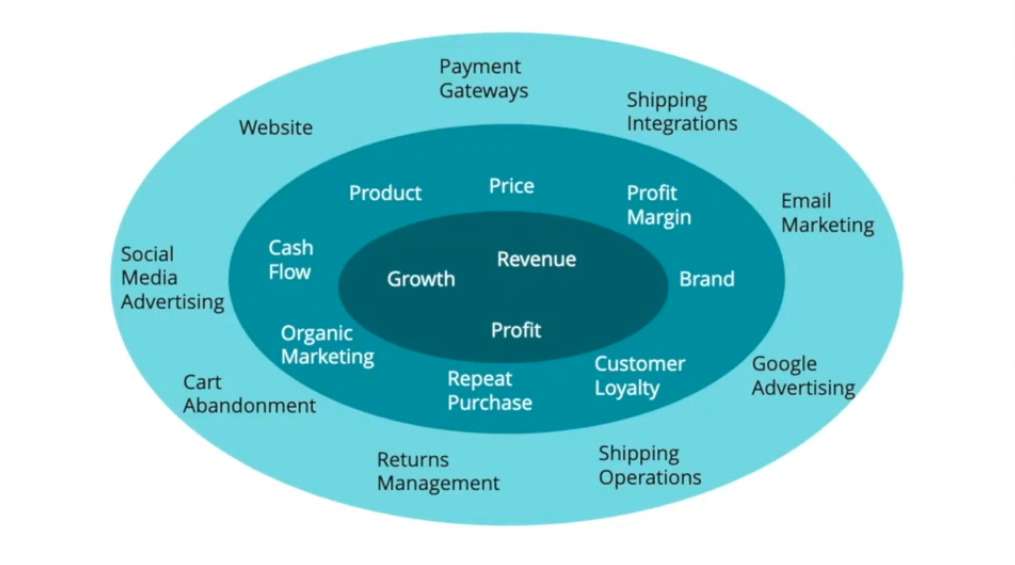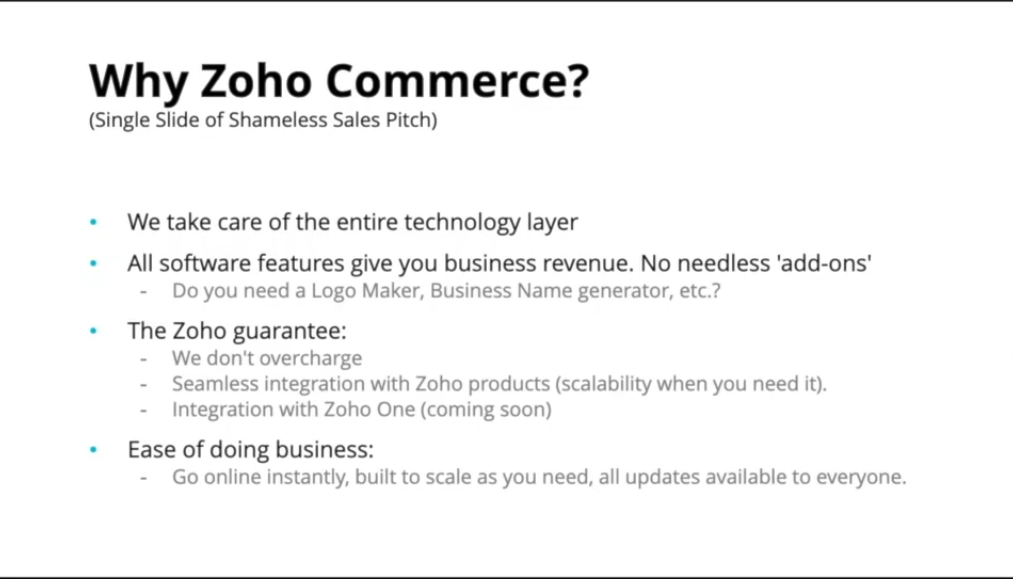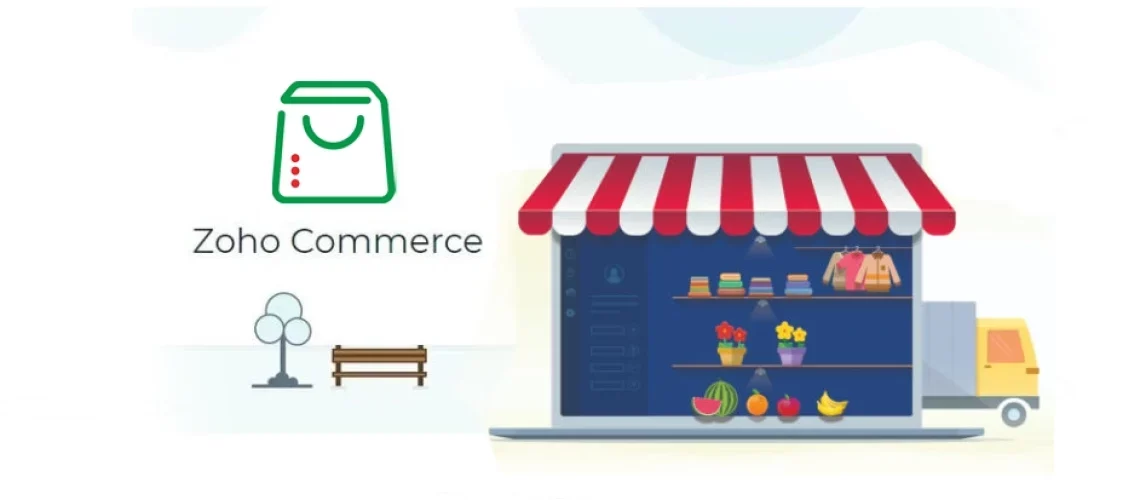There are three layers. The outermost layer is the technology layer. The middle layer is more about your functional layer, and the central layer is what you care about. We’re trying to answer the question of what you care about.
Fundamentally, you should care about revenue, profit, and growth. Everything else you see in the second layer is a way of increasing or adding on to the primary layer.
Product, what price you should be selling at, your profit margin, how to build your brand, how to get customer loyalty and repeat purchases to concentrate on organic marketing, and, eventually, the cash flow.
Need help building successful ecommerce store and enhance customer experience?
Schedule a free consultation with our dedicated Zoho Commerce specialists!

This is the primary way ecommerce sellers should think in today’s scenario. A lot of e-commerce software includes us. Anybody who wants to sell you something is talking about the noise on the outermost layers. They’re talking about how to build a website, payment gateways, and shipping integrations, all of which add to your revenue. Still, they have to be set up in a way where there is a direct link between doing something on the outermost layer and that your inner circle grows bigger. So the focus is always on the innermost circle growing more extensive and the outer layer helping that inner circle to grow bigger.
It would help if you focused on running your business. You don’t need to waste your time building a complicated technology. You shouldn’t be doing it if it doesn’t add to your growth.
Should you be a business owner or somebody trying to run an e-commerce company or thinking of starting an e-commerce company? How much should you care about email marketing? The answer is minimal. If you give time and energy or email marketing, you will become an email marketer. But what about your revenue, profit, and business that you have to concentrate on? And you let the technology guys take care of technology, the website, the social media advertising. Your core should be an on-off switch. Am I doing it? Am I not doing it? Over a period of time, you will get better at it, and you have to allow for growth in that manner. You can’t have everything when you start. You start where you can, and then you bring the aspects as you grow and concentrate on your growth.
Why Zoho Commerce?
Zoho commerce comes with the Zoho guarantee if we don’t overcharge. We let you scale as you grow. So what we mean by it is you can go online instantly—having product photos and descriptions and being able to build your website instantly and starting to sell instantly from there to running an end-to-end email campaign and being able to track it. The revenue aspect is built into the software because you can scale and pay for it when needed rather than paying for everything immediately. And one exciting thing is that many of you might know about Zoho one. It’s a bundle with some of our best software in a single pricing structure where you can use every software. You will be joining Zoho one. We can’t give you a timeline right now, but internally, we are discussing that, and it’s in process. So once you have it, you can seamlessly integrate all Zoho products you might need.

Setting Up A Product
Building A Fashion Store – Women’s Clothing.
You need to have inventory tracking as yes because every sale you make will go back and reduce your stock. This way, you don’t have to handle your stocks manually. The low stock limit is a minimum of five. You’re going to get an email trigger to you so that you know you need to order more of the product.
The product identifier, generally if you’re reselling certain brands, will get these details from your seller. This information will help you better in your marketplace and other places where you can sync. People will trust your brand better because they know you’re selling the original product and stuff.
The dashboard is where you upload the product, and you can drag and drop and choose which product needs to be the primary.
Attribute is another interesting aspect where you can create a specification for your items. Taking clothes, for instance, we have various sizes and colors, so including an attribute like size, you can select small-medium.
This is where you can actually give more details about your product. The length, height, and width are crucial when you are going in for the shipment because FedEx or UPS provides automated live price tracking. This is where it will collect the data. It is best to set these data beforehand. Otherwise, you have to go ahead and introduce all these data later on, which will be a tedious process.
Once we include all of these products, we will save them.
You can include various attributes like the colors also the materials. You can get as descriptive as possible about your product.
Setting Up the Shipping.
You’re going to add shipping details. If you only ship to certain states, you can choose them. You can also do hyper-local delivery where within your state or within your city, you can select certain zip codes and are only allowed to ship.
You can choose this option and then include that particular zip code. We can add different shipping criteria such as free and paid shipping.
You can include a tax on your shipping to your products. For most of our Zoho commerce, customers directly sync with Zoho books; this helps them in automating the entire tax process.
It’s like a one-click process where if you have like a PayPal account, you can pick on setup and directly integrate with it.
Once we have done all the basic setup, including your products and shipping payment, the next step is publishing your site. If you have a domain, add it to your by configuring it. Otherwise, Zoho commerce gives you a sub-domain that you could use for free. I’ll enter your store name and proceed to publish.




